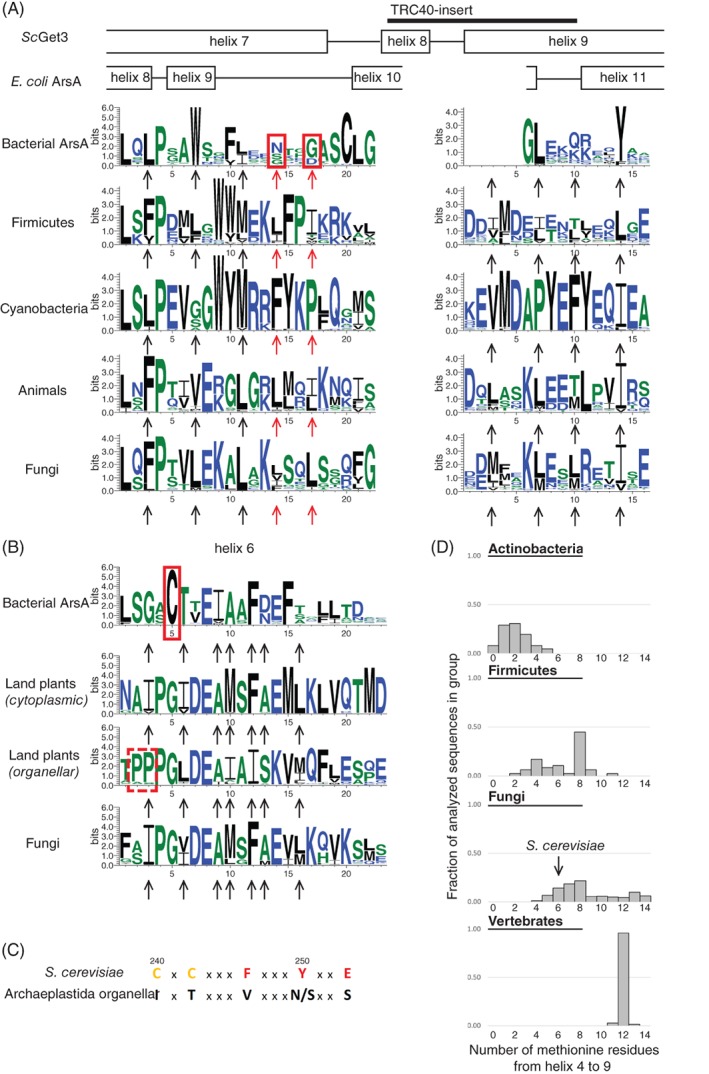Figure 4.

Consensus sequence and important features of the helices flanking the hydrophobic groove and of the region C‐terminally adjacent to it. A, Consensus sequence of the region homologous to ScGet3 helix 7 and 9 in different groups of Get3 homologs. Residues flanking the hydrophobic groove in ScGet3 are marked with an arrow. Residues shown to be important for TA protein binding are marked with a red arrow. Corresponding residues are highlighted with a red rectangle in the ArsA consensus sequence. B, Consensus sequence of the bottom of the hydrophobic groove (ScGet3 helix 6) in different groups of Get3 homologs. Residues facing the hydrophobic groove in ScGet3 are marked with an arrow. Heavy metal ion coordinating cysteine in ArsA and additional proline residues in organellar Get3 homologs highlighted by red boxes. C, Comparison of the CxC motif and key Get1/Get2/Get4 residues between ScGet3 and organellar homologs of Get3 in land plants. D, Distribution of the number of methionine residues in the region homologous to the sequence from helix 4 to 9 in ScGet3 among the sequences used for the current analysis. All bins containing at least 1% of the sequences are shown in the chart. Number of analyzed sequences: Actinobacteria—62; Firmicutes—47; Fungi—489; Vertebrates—70
